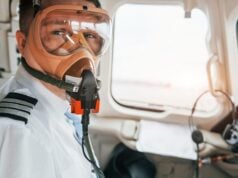
Volcanic ash is a major threat to flight safety. An inadvertent encounter with an ash cloud has the potential to cause severe aircraft structural damage, engine surges, as well as the potential loss of thrust. It is imperative pilots conduct a detailed preflight to determine volcanic activity along the route of flight, adjust flight paths accordingly, and take appropriate risk-management strategies.
Volcanic ash produced by volcanic activity is particularly challenging to detect when flying at night. Given the lack of moisture content of the ash cloud, it rarely procedures radar returns. Thus, the FAA and ICAO have developed tools and products intended to inform pilots of ash clouds during the preflight planning phase.
Both PIREPs and SIGMETs are considered key products in establishing the severity of volcanic ash. In addition, dedicated Volcanic Ash Advisories are disseminated to pilots around the globe. Such advisories are issued by dedicated Volcanic Ash Advisory Centers (VAACs), established by ICAO.
In the event of an inadvertent encounter, it is imperative pilots understand the characteristic cues of an ash cloud. Prompt recognition will allow a prompt exit and minimize any aircraft damage. Flight crews may notice a smoky or acrid smell, along with static discharges on the windshield. It is important to mention that the glow on the windshields (and potentially the engine inlets) is not to be mistaken for “St. Elmo’s fire.” Flight crews, as well as cabin crew and/or passengers, may see a haze develop within the aircraft cockpit and/or cabin. Dust can settle on surfaces.
Further indications may include abnormal pitot-static readings, due to disturbed or clogged pitot probes. Pilots must fly “known” pitch and power settings in that event, while attempting to minimize any power changes. Pressurization could also be affected, requiring the usage of oxygen masks. Surging, torching from the tailpipe, and flameouts can occur as well.
The first priority of the flight crew must be to exit the cloud immediately by executing a 180-degree turn. The abrasiveness of volcanic ash can be very damaging to aircraft, therefore time is of the essence. Pilots shall then comply with any aircraft specific QRH or checklist, and attempt to land at the nearest suitable airport.
Flight crews may face several challenges during the approach and landing phase. Windshields may be obscured or opaque, affecting visibility, while landing lights may be scratched and deemed ineffective. Use of automation to the highest extent is recommended under those scenarios.
All pilots should be familiar with and understand the threat of volcanic ash. A diligent preflight, including PIREPS and SIGMETs, will ensure flight crews avoid such weather phenomenon. Shall an encounter take place, follow the aircraft-specific checklists, communicate to ATC the emergency, and attempt to land at the nearest airfield.





















































































































